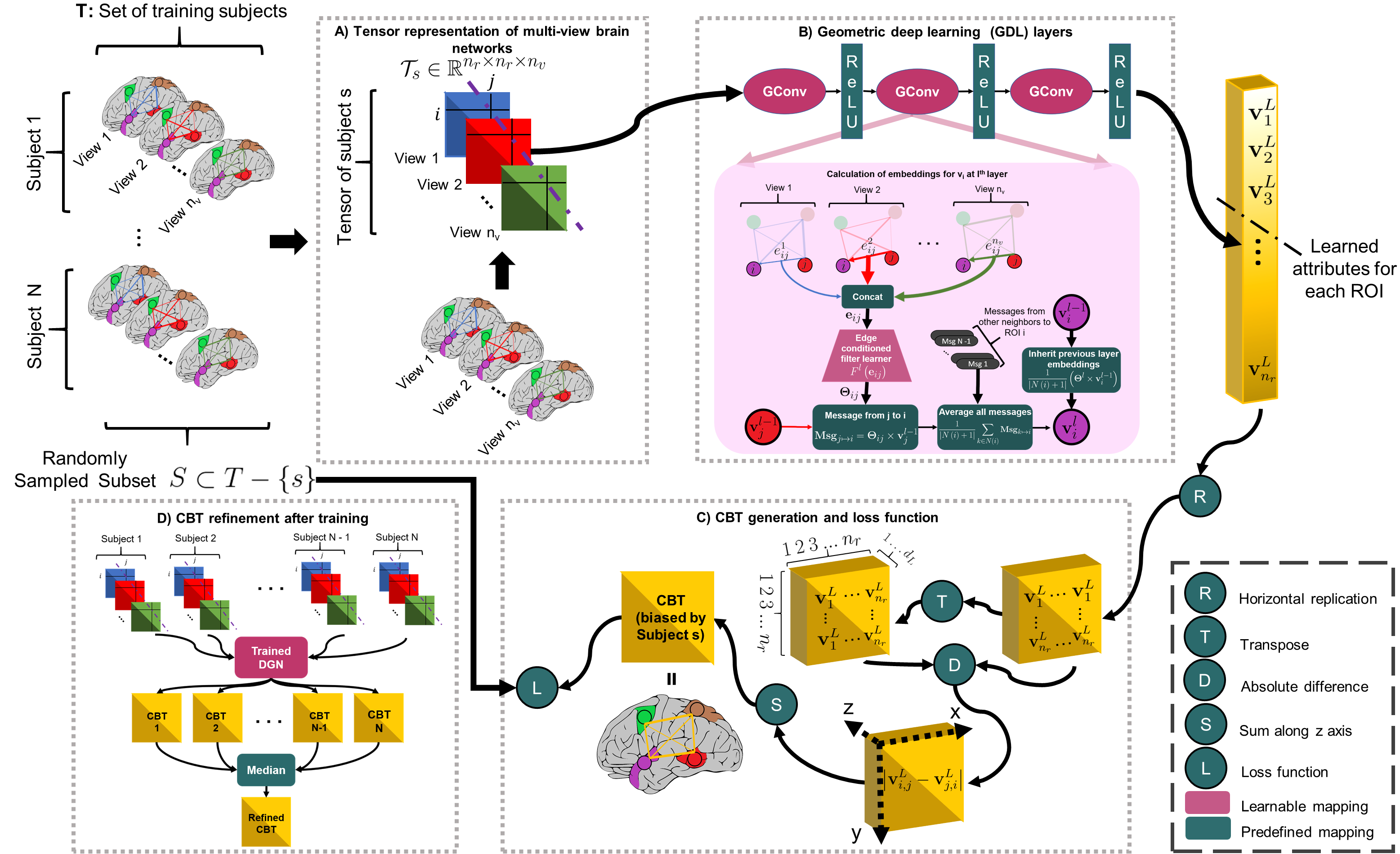Deep Graph Normalizer: A Geometric Deep Learning Approach for Estimating Connectional Brain Templates
A connectional brain template (CBT) is a normalized graph-based representation of a population of brain networks also regarded as an average connectome. CBTs are powerful tools for creating representative maps of brain connectivity in typical and atypical populations. Particularly, estimating a well-centered and representative CBT for populations of multi-view brain networks (MVBN) is more challenging since these networks sit on complex manifolds and there is no easy way to fuse different heterogeneous network views. This problem remains unexplored with the exception of a few recent works rooted in the assumption that the relationship between connectomes are mostly linear. However, such an assumption fails to capture complex patterns and non-linear variation across individuals. Besides, existing methods are simply composed of sequential MVBN processing blocks without any feedback mechanism, leading to error accumulation. To address these issues, we propose Deep Graph Normalizer (DGN), the first geometric deep learning (GDL) architecture for normalizing a population of MVBNs by integrating them into a single connectional brain template. Our end-to-end DGN learns how to fuse multi-view brain networks while capturing non-linear patterns across subjects and preserving brain graph topological properties by capitalizing on graph convolutional neural networks. We also introduce a randomized weighted loss function which also acts as a regularizer to minimize the distance between the population of MVBNs and the estimated CBT, thereby enforcing its centeredness. We demonstrate that DGN significantly outperforms existing state-of-the-art methods on estimating CBTs on both small-scale and large-scale connectomic datasets in terms of both representativeness and discriminability (i.e., identifying distinctive connectivities fingerprinting each brain network population).
PDF Abstract
